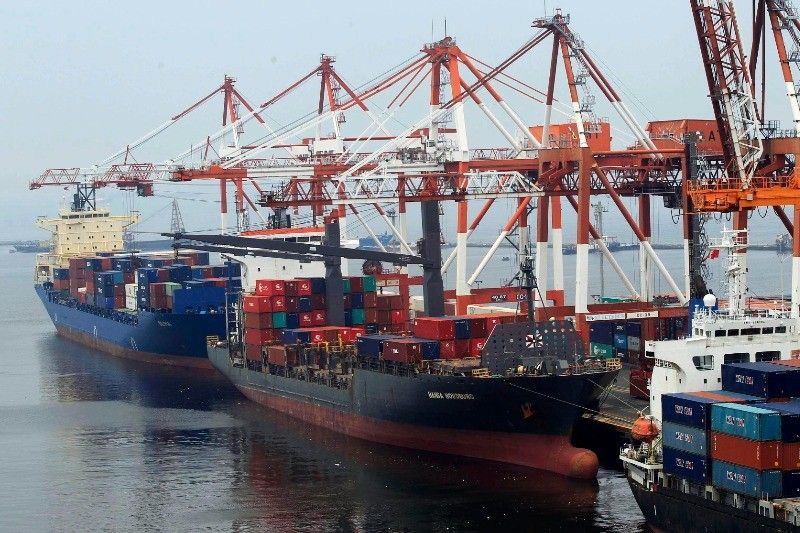Trade still down but back to pre-pandemic level

MANILA, Philippines — Trade is back on pre-pandemic levels in July, but the drop in exports and imports persisted, a signal economic activity damaged by broad lockdowns has yet to come back to full swing.
Total trade reached $13.1 billion in July, down 18.6% year-on-year, but picking up some pace from June’s $12.14 billion, the Philippine Statistics Authority reported on Thursday. The July figure was also the largest since January.
Broken down, exports and imports also notched their best performance since the start of the year, just before the coronavirus disease-2019 (COVID-19) spiraled into a pandemic and put the economy into a stunning halt. Exports reached $5.65 billion, while imports amounted to $7.48 billion.
While there are signs of recovery after the economy reopened in June, imports have struggled to go up. On an annual basis, inbound shipments shrank 24.4% in July, faster than the previous month’s 23.1%. Imports have been on a consistent decline since May 2019.
“The latest (imports) print suggests that domestic demand improvement has hardly moved, while exports does mirror the slightly better external environment,” Ruben Carlo Asuncion, chief economist at UnionBank of the Philippines, said in a text message.
Merchandise exports remained on the negative territory, too, but its decline slowed to 9.6% year-on-year in July. “We expect that towards the end of the year, we can even out (with imports). The trend that we are now seeing is recovery,” Sergio Ortiz-Luis Jr., president of the Philippine Exporters Confederation, said in a phone interview.
In normal times, higher imports were typical and attributed to the government’s infrastructure push which necessitates large-scale shipments of raw materials from abroad. In July however, raw and intermediate goods imports sank 14.8% on-year, while that of capital goods shrank faster by 29.8%.
"The sustained double digit contraction in capital goods and raw materials points to fading potential output, increasing the possibility that the Philippine economy enters a lower growth trajectory over teh course of the next few years," Nicholas Antonio Mapa, senior economist at ING Bank in Manila, said in commentary.
In contrast, the pandemic increased shipments of health products, including imported personal protective equipment that more than doubled from previous year. Broken down, shipments of surgical face masks rose by more than eight times from year-ago levels.
In exports, electronic products tempered their decline to 2.6% year-on-year in July, slowing the year-to-date drop to 13%. Electronics accounted for 59% of total exports that month, figures showed.
Despite the better performance, Danilo Lachica, president of the Semiconductor and Electronics Industries in the Philippines Inc., said the industry group is sticking to its outlook of 20% decrease in exports this year.
“Our projection of -20% is still dependent on quarantine status, and stability of supply chain and workforce,” he said in a text message.
With imports still higher than exports, trade remained on the deficit of $1.83 billion in July, albeit down 49.8% year-on-year. For the first 7 months, the trade gap reached $12.5 billion, narrower by 48.1%. from last year.
“For the rest of 2020, exports are expected to perform better (than) imports. These mirror the continuing weakness of demand locally and the further improving appetite abroad,” Asuncion said.
- Latest
- Trending






























